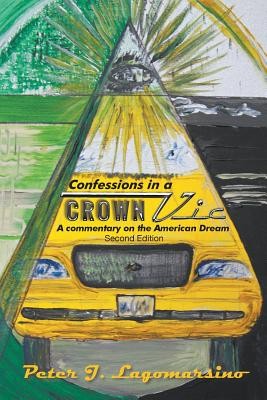
- We will send in 10–14 business days.
- Author: Peter J Lagomarsino
- Publisher: LitFire Publishing
- ISBN-10: 1635247705
- ISBN-13: 9781635247701
- Format: 15.2 x 22.9 x 3.6 cm, softcover
- Language: English
- SAVE -10% with code: EXTRA
Reviews
Description
"Confessions in a Crown Vic"
Second Edition
is the story of professional displacement during the Great Recession, an Architect as Cab driver, while seeking Architecture work. It interviews Paolo Soleri the visionary urban designer, the traffic engineer, Louis Lagomarsino, for Phoenix's highway designs, and the cab passengers' short stories of marginalization for their lack of a car. It's a journey through an Architect's life, beginning with schooling, travels, design, internship, and practices in the private to public projects for the USPS, USAF, USACOE, NAVFAC and manufacturing semiconductor facilities. It takes us through different urban configurations. But most of all it takes us through history's cycles of political change, the semantics of their origins, the delivery of designs, and the affects of expansion and colonialist attitude's in America. It's a critique of Urban Sprawl, and the irrationality of relying on housing starts to determine a healthy economy. It examines Keynesian versus Classical economics, comparing them with the events of the last "American" century. He illuminates the American Dream's unsustainable promise to even its poorest citizens, considering whether we can still re-materialize that dream out of its current mythological existence. Is this dream for everyone? Can we grow a culture based on the automobile and a limited fossil fuel economy? It challenges this dream's configuration, while placing a heavy burden of responsibility for our economic demise on its mythical component, the greed that drove it, and the Sprawl that has burdened it.
EXTRA 10 % discount with code: EXTRA
The promotion ends in 19d.03:26:02
The discount code is valid when purchasing from 10 €. Discounts do not stack.
- Author: Peter J Lagomarsino
- Publisher: LitFire Publishing
- ISBN-10: 1635247705
- ISBN-13: 9781635247701
- Format: 15.2 x 22.9 x 3.6 cm, softcover
- Language: English English
"Confessions in a Crown Vic"
Second Edition
is the story of professional displacement during the Great Recession, an Architect as Cab driver, while seeking Architecture work. It interviews Paolo Soleri the visionary urban designer, the traffic engineer, Louis Lagomarsino, for Phoenix's highway designs, and the cab passengers' short stories of marginalization for their lack of a car. It's a journey through an Architect's life, beginning with schooling, travels, design, internship, and practices in the private to public projects for the USPS, USAF, USACOE, NAVFAC and manufacturing semiconductor facilities. It takes us through different urban configurations. But most of all it takes us through history's cycles of political change, the semantics of their origins, the delivery of designs, and the affects of expansion and colonialist attitude's in America. It's a critique of Urban Sprawl, and the irrationality of relying on housing starts to determine a healthy economy. It examines Keynesian versus Classical economics, comparing them with the events of the last "American" century. He illuminates the American Dream's unsustainable promise to even its poorest citizens, considering whether we can still re-materialize that dream out of its current mythological existence. Is this dream for everyone? Can we grow a culture based on the automobile and a limited fossil fuel economy? It challenges this dream's configuration, while placing a heavy burden of responsibility for our economic demise on its mythical component, the greed that drove it, and the Sprawl that has burdened it.


Reviews